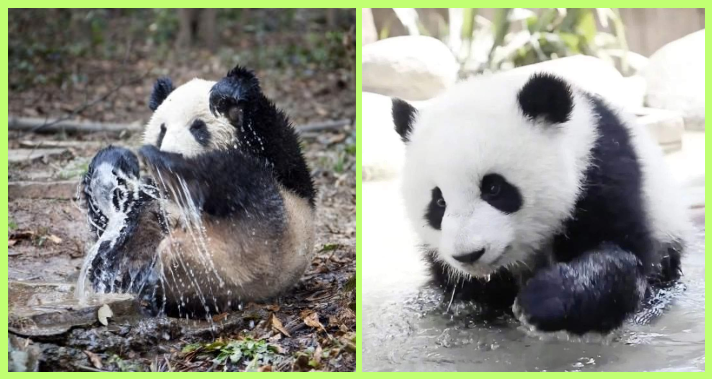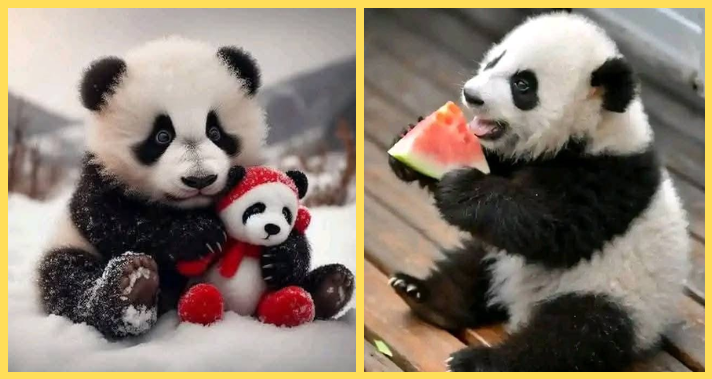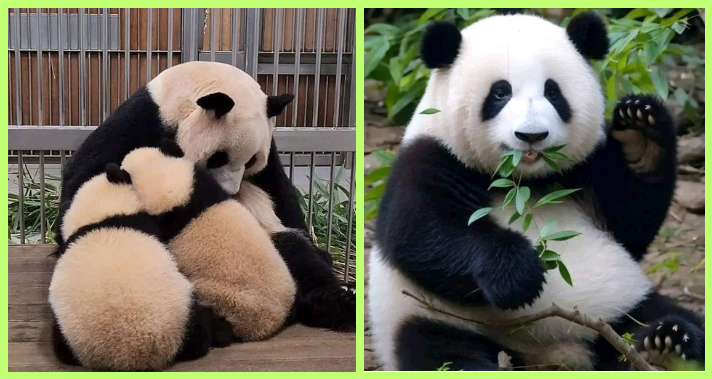The history of the giant panda is one of transformation, one of nature, time and survival. What is known of pandas today is that they lead a peaceful life in the mountains and love bamboo. But their ancestors were not vegetarians. One day they were meat-eating animals with strong hunters. Pandas changed their diet, body and lifestyle over the millennia to become the bamboo-loving creatures we know today. This change did not occur rapidly. It was a gradual process, based on the demand of their survival in the changing world.
From Carnivores to Bamboo Lovers
Pandas’ ancestors were members of the bear family. Like other bears, they were designed to eat meat. They had sharp teeth and had powerful jaws for tearing flesh. Their bodies were adapted for hunting and eating animals. Their digestive system was also similar to meat eating creatures. This means that they could easily work with animal protein. These early pandas lived in the forests and hunted for smaller animals as a part of the natural diet. At this stage of evolution, bamboo was not yet their main food yet. However, as time went on, things that were around them began to change. These changes gradually compelled pandas to rely less on meat and more on other sources of food at their disposal. This was the start of their move towards bamboo.
In the mountains where pandas lived, there were plenty of bamboo forests. Bamboo was always on hand and re-grew quickly after eating. While it was not very rich in energy, it was abundant. The ancestors of Pandas started to eat bamboo more and more. At first, it may have been just a small part of their diet, but as time went on that changed and it became more important to their survival. The more they were depending on the bamboo, the more their bodies had to adjust. Their sharp teeth that were used for cutting meat became more flat and stronger for crushing bamboo. Their strong jaws also became better at breaking the tough bamboo stems and leaves.
#1. That picture shows the panda are only bamboo lovers
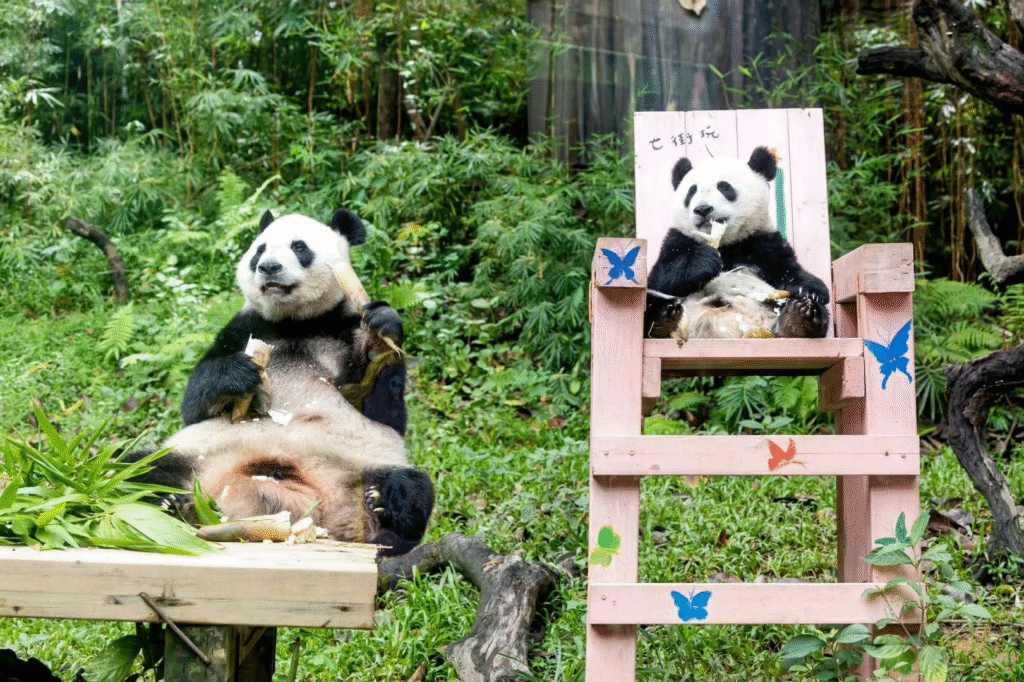
#2. That’s how happy family of pandas looks like

As the panda kept on eating bamboo, the body of the animal gradually adapted to suit the new lifestyle. One of the most special change was in their wrist. Small bone in the wrist grew long and started to function like a thumb. This helped the pandas to hold onto the bamboo better when eating. It was not a thumb as humans have thumbs, but was functionally an opposable thumb. This slight modification facilitated the ability of the pandas to seize bamboo sticks and put them in their jaws. Their teeth and jaw muscles also changed. To handle the day-to-day task of chewing the tough bamboo they grew wider and stronger. Their skull shape got larger and rounder in order to accommodate these strong jaws.
#3. What have they done to mommy too get gray baby

Their digestive system, however, did not completely change. They still have a stomach just like the meat-eating animals. Because bamboo is hard to digest, and is low in nutrients, pandas now have to eat for many hours a day in order to remain strong. The change in diet brought a change in lifestyle too. Pandas did not need to chase animals or run. Since bamboo does not provide much energy, the conservation of strength became important. Pandas have evolved to live in a slow and silent manner. They spend the majority of their time eating and sleeping. They do not make long distance travels nor fight very frequently. Their calm nature is closely related to their food choice and energy-saving lifestyle.
#4. Pandas have sharp teeth to eat the bamboos
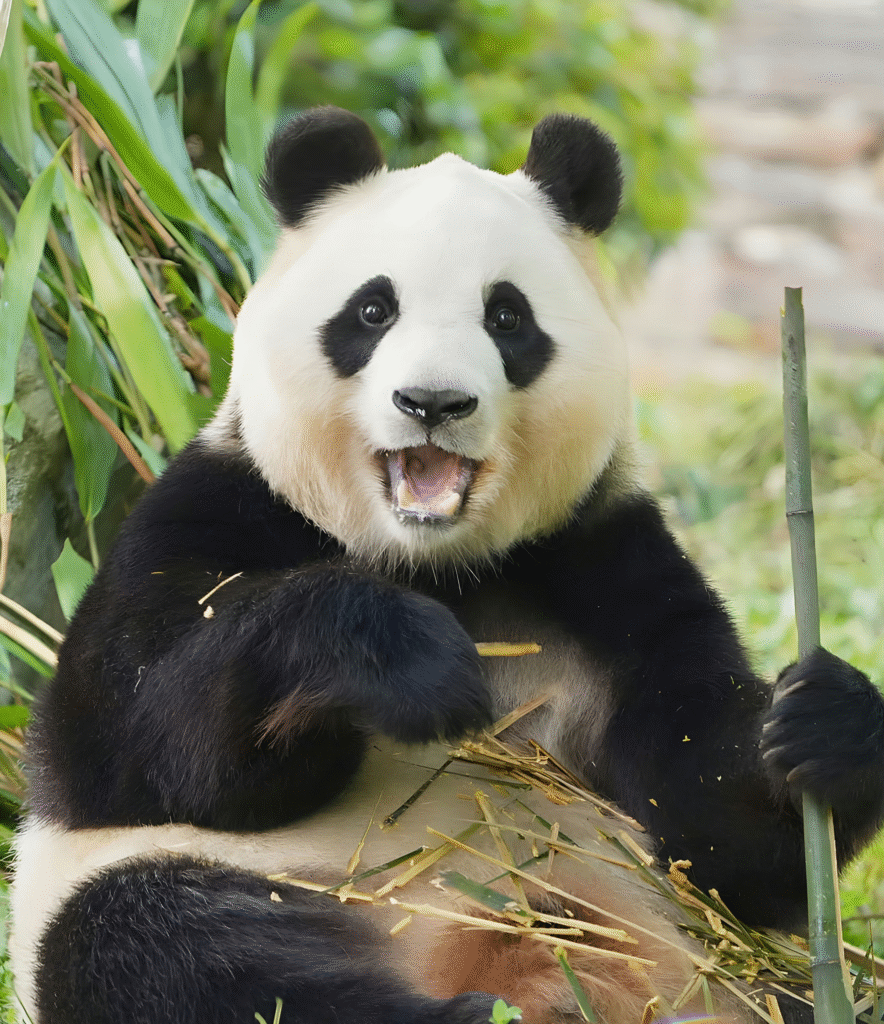
Their senses adapted too to this new way of life. Pandas are very reliant on their sense of smell to help them to communicate and locate others during mating seasons. Their eyesight is not very good, but it is sufficient as they live peacefully in thick forests. Their thick fur protects them from cold weather in the mountains and they live in the high places where bamboos grow well. Turning into a carnivore and then a bamboo lover was not merely a metamorphosis of the diet. It was a change of survival strategy. Pandas, by choosing bamboo, escaped competition with other animals that preyed on meat. They asserted a specific niche of nature that few animals could follow. This helped them to survive for many generations. Their slow way of life, strong jaws and special wrist bone all became part of their identity.
#5. That brown and white panda is just adorable

#6. It’s milk time for baby pandas
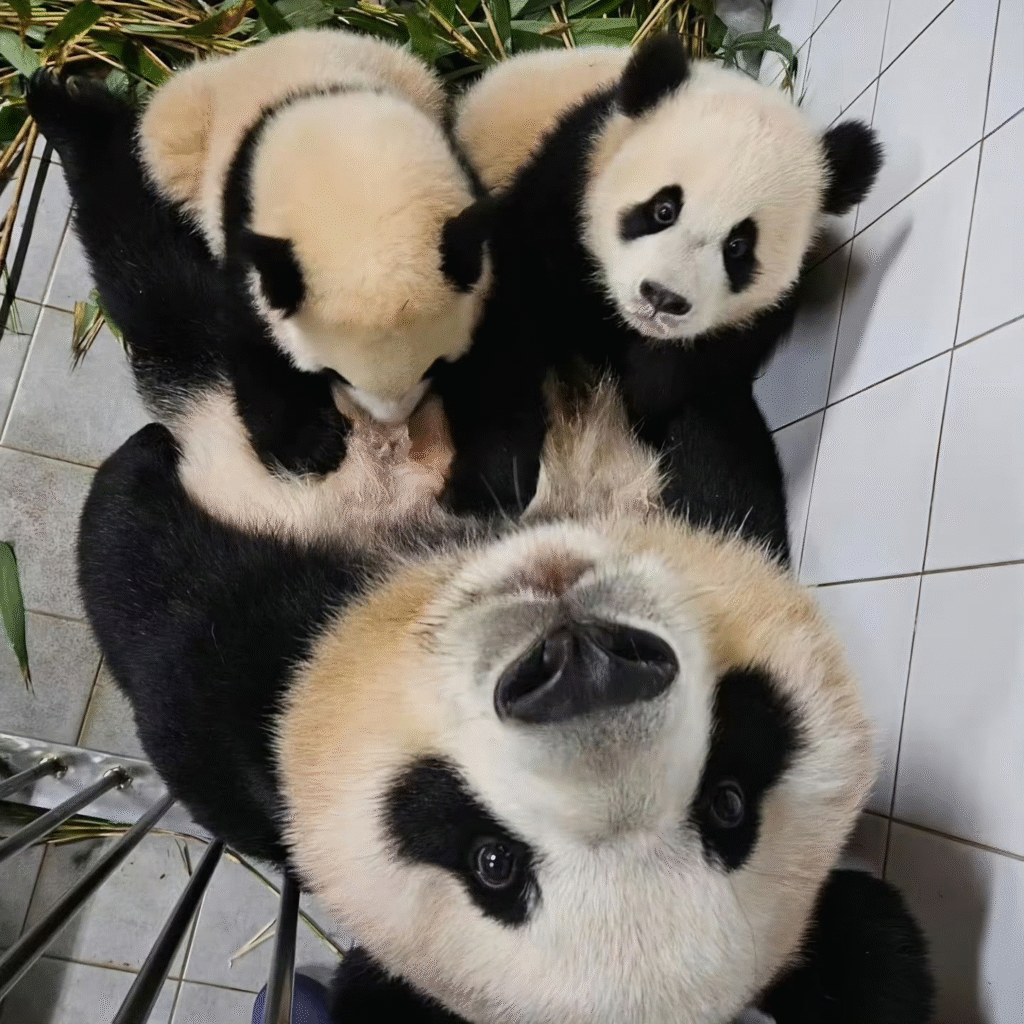
However, this special adaptation also made them dependent upon the bamboo forests. If bamboo became unavailable, it would be hard for the panda to find an alternative such as meat. Over the years, their bodies and habits became too closely linked to that of bamboo. Their existence now depends on the well-being of the forests in which they live. While bamboo could be considered a savior of the panda, it is also problematic. Bamboo has low energy so the pandas have to eat a lot every day. They are able to chew for over half of their day. The reasons for their slow movement and long resting hours are to conserve energy. Their digestive system extracts very little nutrition from what they eat and the remainder is passed through their bodies rather quickly.
#7. Give me a hug
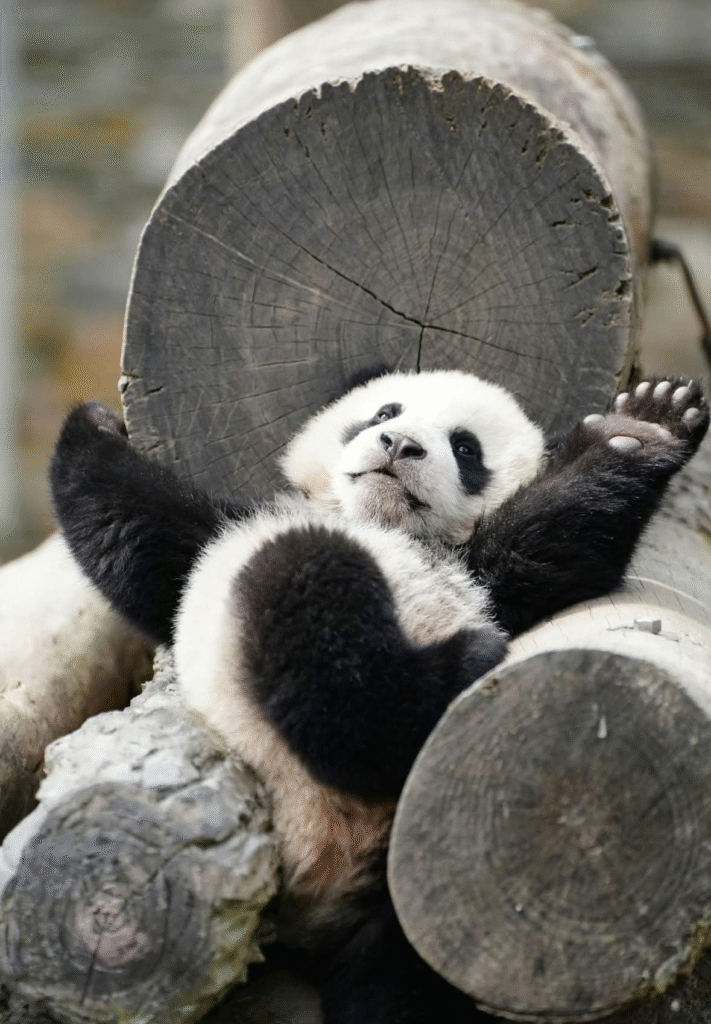
Because of this, the daily routine of pandas is very simple, and they simply eat, rest and move to new spots for bamboo. This peaceful pattern suits them well, however they are left exposed to environmental changes. If bamboo forests are damaged or are no longer there as a result of natural or anthropogenic causes, pandas have a difficult time finding the food they need. Today, the panda is considered to be a symbol of gentle strength and natural beauty. But hidden in its great history is a tale of transformation. The panda is a descendant of a meat-eater to a quiet eater of bamboo, and it is something that nature can do to a person. Every part of its body as well as every aspect of its behavior is a story of survival by adaptation.
#8. It’s time to play and enjoy
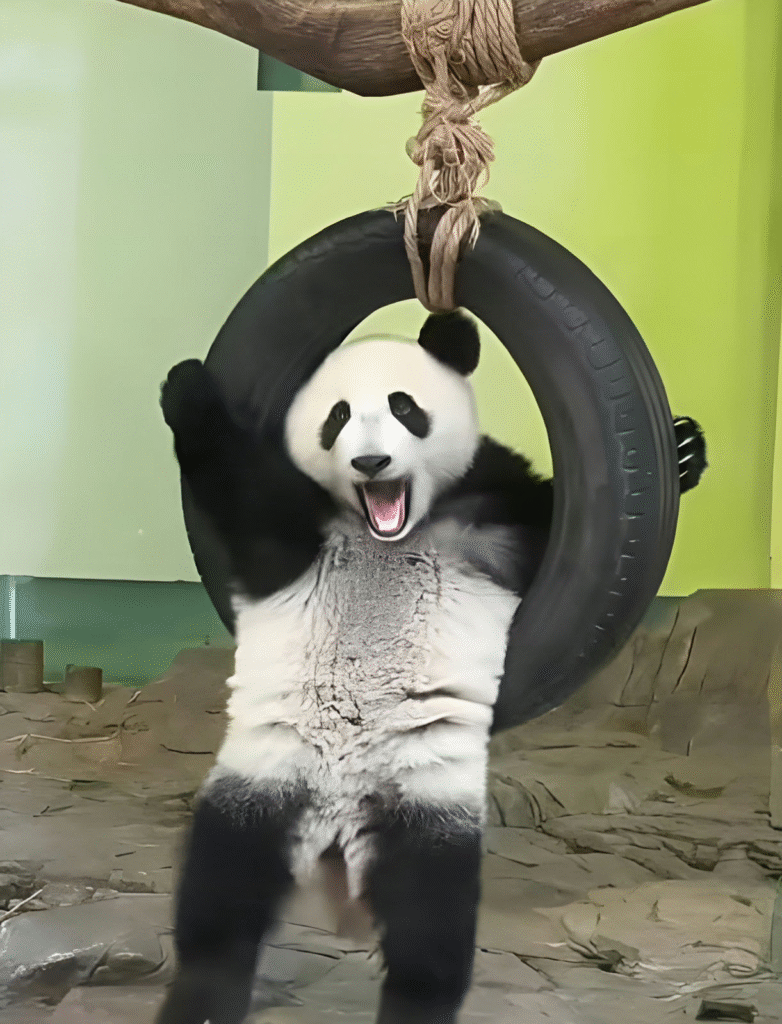
#9. Help me to escape buddy

The continuum of their evolution provides evidence of change as slow but powerful. Even though they belong to the bear family, they changed to be different from all other bears. They opted for a nonviolent way of survival, a way in which they would rely on plants instead of prey. This makes them one of the most unique animals on this planet. The development of panda also helps us to understand that strength and speed do not necessarily help to survive. Sometimes it is a matter of learning to live in harmony with nature. Pandas were not carnivorous animals. They took a new route, a route that enabled them to survive according to their own way.
#10. Pandas love to share their food

By selecting bamboo, they found a place in the mountains where they could live in peace and safety. Future generations of the species are reliant on their forests. As long as bamboo grows and nature remains in balance, pandas have continued and will continue to live as they are now peacefully and slowly, as evolution intended them to live. If you have enjoyed reading this blog and found it interesting, please feel free to share it to other people who may also have the love for panda as you do. With your support, we are able to reach more people who care about nature and wildlife. Do not forget to check our website for more cool articles and news about issues like this.


